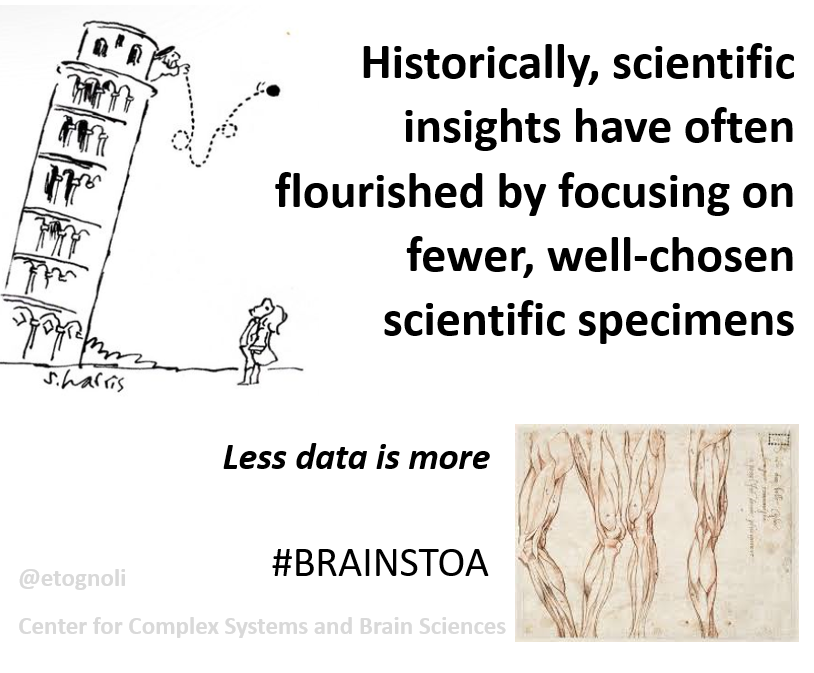Discover and read the best of Twitter Threads about #ComputationalNeuroscience
Most recents (4)
Interested in reconstructing computational dynamics from neural data using RNNs?
Here we review dynamical systems (DS) concepts, recent #ML/ #AI methods for recovering DS from data, evaluation, interpretation, analysis, & applic. in #Neuroscience:
biorxiv.org/content/10.110…
A 🧵...
Here we review dynamical systems (DS) concepts, recent #ML/ #AI methods for recovering DS from data, evaluation, interpretation, analysis, & applic. in #Neuroscience:
biorxiv.org/content/10.110…
A 🧵...

#radioactive commentary, w/ apologies to all admirable people of #BrainSTOA working hard on #DataSharing. This highlights a need to broaden #sharing to #computations & #insights. Premises were clear in Ngai’s “data resource development”, Bjaalie’s “modeling workflow” #Teamscience 

Data sharing is good. Too much data creation, objectionable. Overreliance of data might be used to obfuscate gaps in theory, analysis and interpretation. Data is also a currency for misused scientific power. #InclusiveScience 

At this point, we should also focus on sharing #ComputationalTools (and explaining them, and building expertise in using them). #ComputationalNeuroscience.
We should enhance collective vetting of our interpretations of their meaning.
We should enhance collective vetting of our interpretations of their meaning.

Chapter 4: Head rotation sensation is a splendid example of dynamic #Bayesian multisensory fusion since it involves several sensors with different dynamics. These sensor can be put in conflict or switched on/ off experimentally. Follow the tour! #vestibular 

2/ We have (at least) 3 rotations sensors with different dynamics: the inner ear's canals detect acceleration; vision velocity, and graviceptors position (when rotating in vertical planes). The brain also relies on a zero velocity prior. Looks like a job for a #Kalmanfilter! 

Chapter 1: Why do we feel #dizzy when turning? This is because of how out inner ear’s rotation sensors (#vestibular semi-circular canals) work, from a mechanical point of view. Watch these movies and the next for explanations.
2/ The inner ear's #vestibular semi-circular canals are liquid-filled tubes. When the head rotates, the liquid stays in place and flows in the canal. This activates hair cells (in a structure called cupula) that sense the rotation.
3/ However, when turning too much, the liquid starts to rotate with the canal and the rotation signal fades out. Furthermore, when the rotation stops, the liquid keeps flowing and creates a rotation after-effect.



